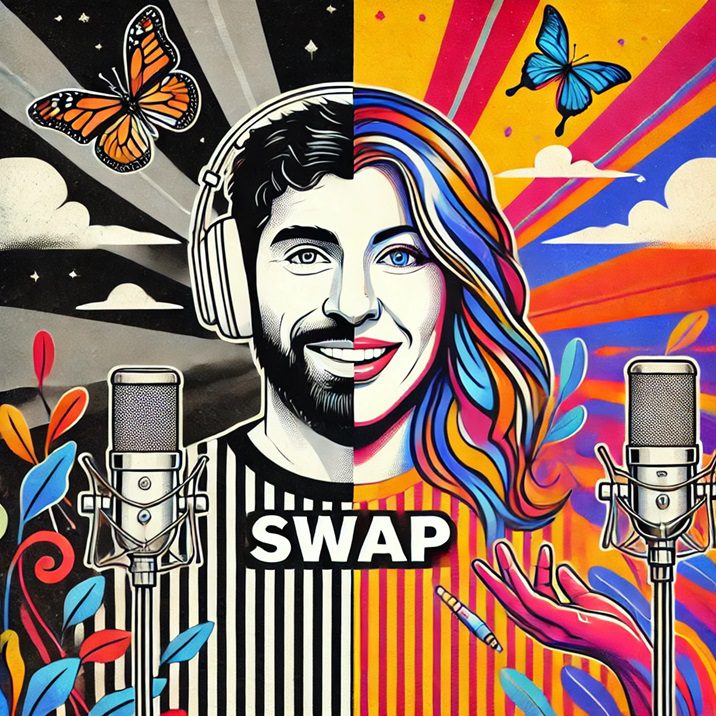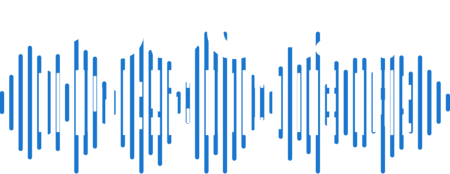 Growing and keeping your audience and increasing engagement can often feel like an uphill battle for podcasters. One fresh strategy that podcasters can enlist is the podcast swap. A podcast swap involves two podcasters guesting on each other’s shows and/or featuring the other’s content on their shows. This creates a mutually beneficial arrangement that can bring many advantages.
Growing and keeping your audience and increasing engagement can often feel like an uphill battle for podcasters. One fresh strategy that podcasters can enlist is the podcast swap. A podcast swap involves two podcasters guesting on each other’s shows and/or featuring the other’s content on their shows. This creates a mutually beneficial arrangement that can bring many advantages.
“Swaps while somewhat popular you have to be clear with your audience that you’re going to do it ahead of it happening some audience may consider it bad form,” advises Blubrry CEO Todd Cochrane. “A promo swap may be a good way to ease into it to gauge reactions.”
Here are some benefits, logistics, potential pitfalls, and practical suggestions on approaching podcasters for a swap.
Benefits of Podcast Swaps
 Audience Growth: Cross-promotion creates a connection between two different audiences. By appearing on another podcast, you gain access to their listener base, potentially converting them into regular listeners of your show. In addition, when a podcaster guests on another show, their endorsement carries weight. Listeners who trust the host are more likely to give the guest’s podcast a try, leading to higher engagement and trust.
Audience Growth: Cross-promotion creates a connection between two different audiences. By appearing on another podcast, you gain access to their listener base, potentially converting them into regular listeners of your show. In addition, when a podcaster guests on another show, their endorsement carries weight. Listeners who trust the host are more likely to give the guest’s podcast a try, leading to higher engagement and trust.- Content Variety: Having a guest from another podcast brings new insights and viewpoints to your show, keeping content fresh and engaging for your audience. Swapping allows you to take a break from creating solo episodes while still providing valuable and consistent content to your listeners.
- Networking and Collaboration: Podcast swaps foster strong relationships within the podcasting community, opening doors for future collaborations, joint ventures, and cross-promotions. Plus, engaging with fellow podcasters can be a great learning experience, offering new strategies, techniques, and perspectives on podcasting.
Logistics of Podcast Swaps
 Finding the Right Partner: Ensure the other podcast has a similar target audience. This increases the likelihood of listeners being interested in both shows. That said, it might be a good time to expand your horizons and reach by enlisting a guest who has a different perspective or a different dynamic in the podcast community. Choose a podcast that complements your content. For instance, a tech podcast swapping with a business podcast might work well if there’s overlap in topics like tech entrepreneurship.
Finding the Right Partner: Ensure the other podcast has a similar target audience. This increases the likelihood of listeners being interested in both shows. That said, it might be a good time to expand your horizons and reach by enlisting a guest who has a different perspective or a different dynamic in the podcast community. Choose a podcast that complements your content. For instance, a tech podcast swapping with a business podcast might work well if there’s overlap in topics like tech entrepreneurship.- Coordination and Scheduling: Plan the release dates strategically to maximize exposure. Ideally, episodes should be released close together to keep the momentum. Agree on a promotion plan before you get started, including social media posts, email newsletters, and mentions in upcoming episodes. Our Podcast AI Assistant (Blubrry PAI) is a great help in this area!
- Technical Considerations: Ensure both parties have good recording setups to maintain audio quality. Media Mastering can help in this area, as it balances and enhances the audio quality. Decide who will handle editing and post-production. Some podcasters prefer to edit their own guest episodes to maintain consistent quality. Also consider Blubrry’s Pro Production, which does it all and ensures the best quality for your episode.
Potential Pitfalls and How to Avoid Them
- Misaligned Expectations: Establish clear expectations regarding the swap’s goals, promotional efforts, and episode content. Misunderstandings can be avoided through thorough discussions upfront. Consider having a written agreement outlining each party’s responsibilities and expectations.
- Audience Mismatch: Conduct thorough research to ensure audience alignment. A mismatch can lead to low engagement and dissatisfaction from listeners. Start with a single-episode swap as a pilot to test audience reception before committing to a series of swaps.
- Technical Issues: Conduct test runs to check audio quality and compatibility of recording equipment. Have backup plans for potential technical failures, such as backup recording devices or rescheduling strategies.
Approaching Podcasters for a Swap
 Research and Personalization: Before reaching out, listen to several episodes of the other podcast to understand their style, content, and audience. Craft a personalized pitch that highlights why a swap would be beneficial for both parties. Mention specific episodes you enjoyed and how their content aligns with yours.
Research and Personalization: Before reaching out, listen to several episodes of the other podcast to understand their style, content, and audience. Craft a personalized pitch that highlights why a swap would be beneficial for both parties. Mention specific episodes you enjoyed and how their content aligns with yours.- Professional Communication: Send a professional email introducing yourself, your podcast, and the idea of a swap. Be concise but thorough in explaining the benefits and logistics. If you don’t hear back, follow up after a week or two. Persistence shows dedication but ensure you remain respectful and not overly pushy. Emphasize the mutual benefits, such as audience growth and content diversity. Make it clear that the swap is a win-win situation.
Podcast swaps are an excellent strategy for podcasters looking to expand their reach, diversify their content, and build strong industry relationships. By understanding the benefits, managing the logistics effectively, and approaching potential swap partners professionally, podcasters can navigate this strategy successfully while avoiding common pitfalls.
Have you included podcast swapping in your podcast plan? Let us know your approach . . . and any pitfalls you’ve encountered that might help other podcasters considering a swap.





